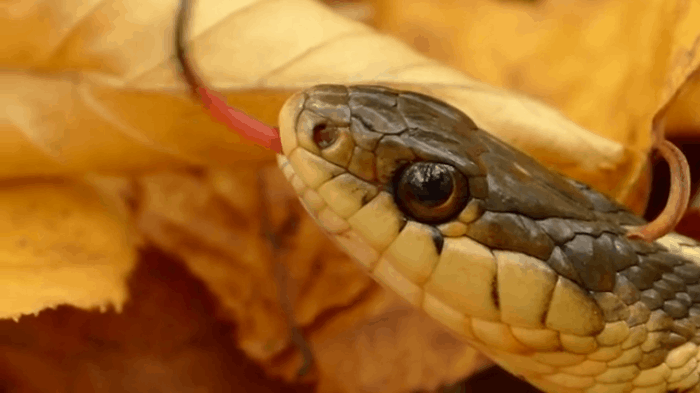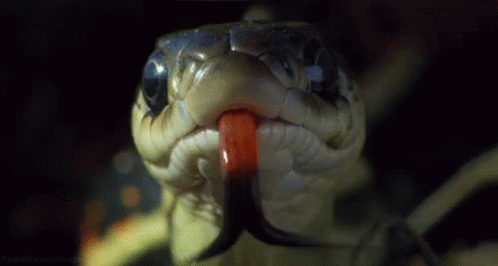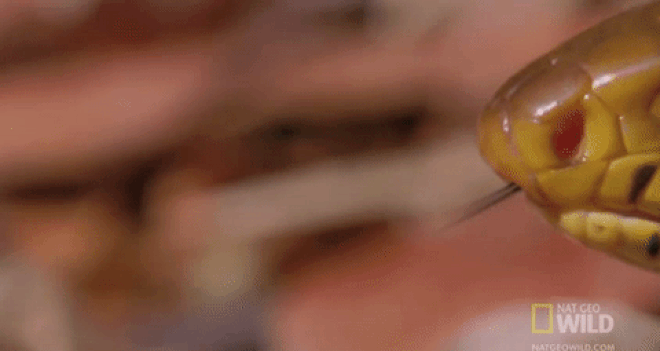Do you know what the function of a snake tongue is? Very unexpected results!
Think of a snake sticking out its tongue to catch prey, but anyone who knows them has another function, it's unbelievable!
Still questions about snakes, it seems that the secrets of reptiles still attract the attention of many people.
Surely we are too familiar with the image, but what kind of function does a solid tongue "stick out" ?

We must be familiar with this image, right?
There are quite a lot of hypotheses to explain the true function of the snake tongue. So they stick out to catch prey, which is to increase the taste of food taste . but the latest scientific research has refuted these hypotheses.
According to evolutionary biologist Kurt Schwenk of the University of Connecticut (USA), who has studied the function of snake blades for the past 20 years, snakes use tongue to . smell.

Snakes use tongue to . smell.
Specifically, snakes use blades to pick up chemicals in the air, on the ground. When a tongue "glides" in the air, they collect a small chemical molecule, and when they put their tongue back into their mouths, they integrate with a part called vomeronasal (also known as "sugar cane leaves"). ) in solid palate.
When chemical molecules penetrate inside vomeronasal, they will trigger different signals to be transmitted to the brain. Now, the vomeronasal system will tell snakes what they both "smell".

The blade will help the snake navigate the path, thus detecting the danger.
Need to say a little bit, actually the tongue of the snake protruding out indentation does not move completely inside the closed mouth, but simply put the collected chemical on the cushion on the solid floor of the closed mouth.
According to experts, these pads have brought the chemical sample molecule to the entrance of sugarcane leaves when the floor of the mouth is raised to come in contact with the palate, immediately after the snake sticks out its tongue.
In this way, the snake will navigate the path, thus detecting the danger - helping the snake avoid the enemy or "grab" the prey.
- Why is the snake tongue branching?
- Very strange super tiny snake in Vietnam
- Interesting things about snakes
- The color of the tongue warns the disease
- Warning signs of tongue cancer
- Flower of 3 blades and special ability that only 1% of people in the world have
- The unbelievable thing about the cat's tongue made many people terrified
- Do not confuse tongue cancer and mouth heat
- Stages of tongue cancer and treatment
- Video: The man paints with ... tongue
- The old man gave the tongue a bite of a snake just to give it
- Why is a player with a head injury vulnerable to losing his tongue and dying?
 Animal 'suffering' after hibernation
Animal 'suffering' after hibernation Why do goats climb well?
Why do goats climb well? Scientists were surprised to see chimpanzees eating turtles
Scientists were surprised to see chimpanzees eating turtles Giant catfish died deadly due to drought in Thailand
Giant catfish died deadly due to drought in Thailand